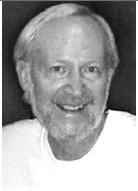Last year I had tea with the Queen at Buckingham Palace. Princes Philip, Charles and Edward were there too. I like the Queen. She’s professional and does her best to make people feel at ease. But sometimes being in the august presence works strange tricks on one’s neighbors.
I was standing in a small group, politely chatting away and hoping to appear relaxed on my cup of tea amidst the trappings of the drawing room, when Her Majesty started to make her royal progress directly towards us. Suddenly, in a flurry of elbows, deft movements and crisp side-stepping checkmates, I found myself standing behind a pillar, chatting to a wall.
By the time I extricated myself from this unflattering architectural position, the Queen had well-wished her way through curtsying and bowing tea drinkers in my group and was steadily bearing down on the next gaggle of card-carrying royalists. Alas, I thought, there went my chance. I’ll just have to perfect my palace gymnastic skills, so I can adroitly sidestep on sidesteppers next time.
So, turning to find something a little stronger than a gentile cup of tea, I found myself face-to-face with Prince Philip. This was encouraging. At least we are members of the same club, I thought.
“Hullo, and what do you do then?,” he asked in a friendly, matey way. Naturally disappointed he didn’t remember me from lunches at the club, I replied brightly, “I’m Chairman of the Network of Buddhist Organizations for the UK.”
Pausing to take that in, he then said, “Can you make a living from doing that sort of thing?” “Err, no” I replied, “I’m actually a psychotherapist.”
Looking at me sagely, he responded, “Ah, now that’s something that will help get you through the day.” Then, after proffering his hand for a friendly handshake, he disappeared into the direction of curtsying and bowing, leaving me in the wake of the royal slipstream.
Reflecting on the bottom of my empty tea cup, I had this sudden vision of being transformed into a DJ at that moment with huge Bose speakers as back-up and throwing on a Rolling Stones CD to see how everyone would dance, balance their tea cups — and chat with the Queen at the same time.
That vision went poof when I turned to find myself standing next to Prince Charles who was having a very amicable talk with a group of teenagers from various cultural backgrounds. I was impressed with his relaxed, informal style. He seemed at his best with normal people, and he tried to engage all the young people in the conversation.
Feeling like an interloper, I decided to move on and, in spite of myself, I was soon shaking hands and chatting with princes and princesses, palace courtiers, bishops, imams, Buddhist monks and even a Scotland Yard detective or two. Happily I didn’t spot a single politician. Then, I found myself standing next to a pillar, seemingly detached from handshakes and chats with all the august movers and shakers of the realm, when from around the other side sprang the Queen. Well, maybe not quite “sprang.” More like emerged.
She put out her hand and said “Hello” with a sweet smile. In spite of my republican leanings I was charmed. She was really quite nice. “Thank you for a lovely party,” I said. “Yes, do come again,” she replied with all the sincerity of the perfect hostess.
Well, I’m not going to hold my breath for the next invitation, but I wondered what the palace response would be if I offered to do a therapeutic dance workshop in one of the great halls using my Rolling Stones and salsa CDs, and tai-chi music. I have an idea the Queen and Prince Charles would be good sports and jump in without too much hesitation if there were no cameras and journalists.
The whole royal experience reminded me of group therapy. One can see how people are wired by how they react to different stimuli, attitudes, behavior and comments within a group. Being in group therapy can be very intense. It’s even more intense when one is in group therapy training with a whole roomful of therapists who know all the lingo and are desperately trying to look more nonchalant, knowledgeable and “normal” than the rest.
But, if you can survive — and everyone does — it’s a good way to get insights about oneself and how our inner wiring plays a role in personal happiness and the way we relate to others.
In addition, I discovered dance therapy later in my therapy career, and I’m glad I did. It can be a gentler, easier way to work with clients in some group settings. I have also discovered it’s a great tool for intercultural communication. When I have had mixed groups of Japanese and non-Japanese in which we don’t use words, but only movement and emotional expression, there is a leveling of the playing field and a deep connection made between individuals and the group.
Non-Japanese have often mentioned they can’t imagine Japanese expressing their emotions openly and freely. My experience is quite different. On a weekly basis, I am seeing expressiveness, warmth and loving attitudes that inspire me in the rest of my psychotherapeutic work. So, roll over, Freud, and pass the CDs. Maybe there is a way through the intercultural wilderness after all.
Maybe it’s like going to Buckingham Palace for tea with the Queen. It’s an experience and, once you’ve done it, it’s a lot easier to relate to people in different settings; maybe even Prince Philip.
David Tharp is a psychotherapist specializing in couple relationship and sexual therapy. He trained at the Institute of Psychiatry in London. He also practices intercultural therapy and has a weekly therapeutic dance workshop. He works with individuals, couples, groups and organizations.








_KRAACH-クリスタルバスソルト-385x257.jpg)
